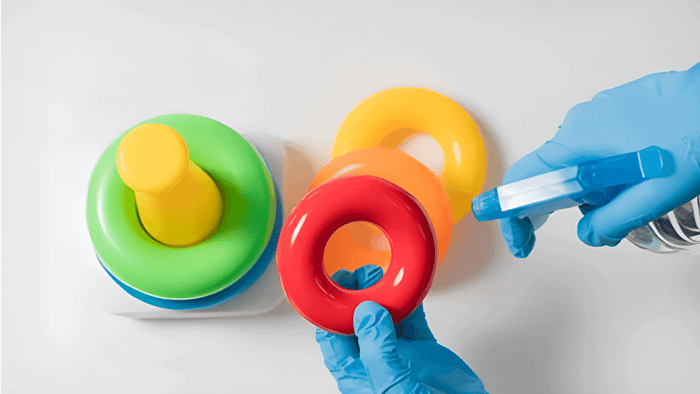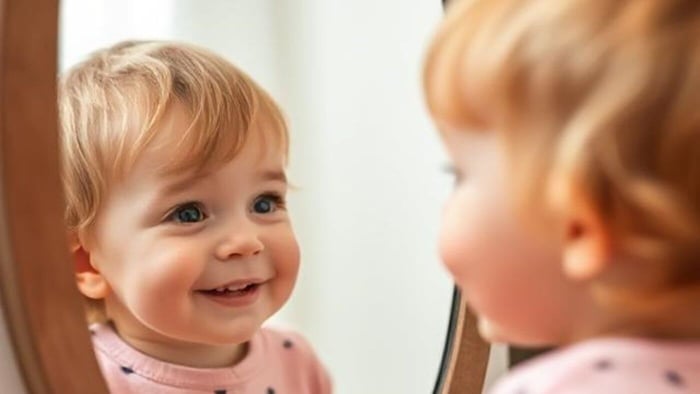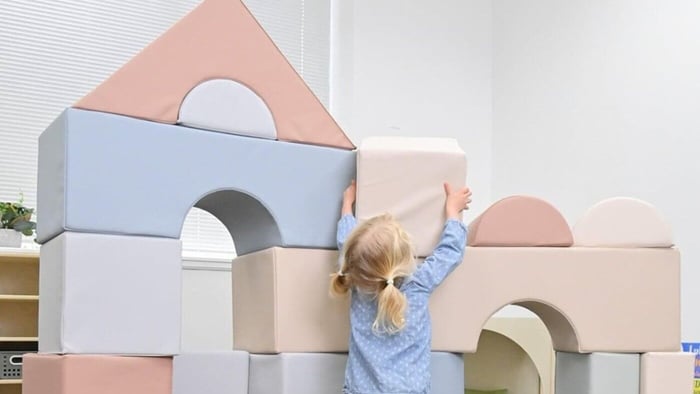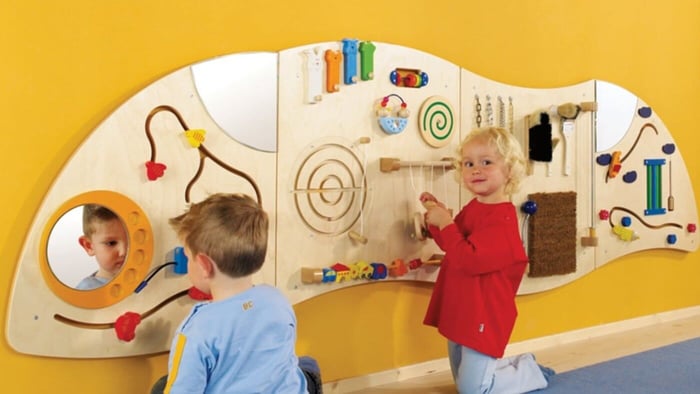
Toy Disinfecting Guide for Daycares and Schools
Table of Contents
- Key Takeaways
- Why Toy Disinfecting Matters for Child Health
- Understanding the Cleaning Spectrum
- Budget-Friendly Toy Disinfecting Solutions
- Smart Disinfection Protocols by Toy Type
- Streamlining Your Toy Disinfecting Process
- Safety First: Using Products Correctly
- Healthier Children Through Affordable Toy Disinfecting
- Easy to Clean Toys for Daycares and Classrooms from Little People's Cove
Keep children healthy without breaking the bank! Learn how to effectively clean, sanitize, and disinfect toys using simple bleach solutions (just 1 tbsp per gallon of water), rotating toy systems, and smart cleaning schedules that prevent illness spread in daycares.
Key Takeaways
- Proper toy disinfecting is crucial for preventing illness spread in childcare settings and can be done affordably with basic household items
- Knowing the difference between cleaning (removing dirt), sanitizing (reducing germs), and disinfecting (destroying germs) helps you choose the right approach for different toys
- A simple bleach solution (1 tablespoon of unscented bleach per gallon of water) is one of the most cost-effective sanitizing options for daycares
- Little People's Cove offers easy-to-clean toys that simplify the disinfection process for busy childcare environments
- Creating toy rotation systems can reduce your daily cleaning workload while maintaining high hygiene standards
Why Toy Disinfecting Matters for Child Health
When 20 children share the same building blocks, germs spread faster than gossip at a parent-teacher night. In childcare environments, proper disinfecting isn't just about cleanliness – it's your first defense against illness outbreaks and excessive sick days.
Children transfer germs through touching, mouthing, and sometimes sneezing or coughing on toys. These shared items quickly become transmission points for common childhood illnesses. The challenge for budget-conscious daycares and schools is maintaining proper hygiene without expensive commercial products. Little People's Cove understands these challenges, offering easy to clean toys that help childcare providers create healthier environments while keeping costs manageable.
Understanding the Cleaning Spectrum
Difference Between Cleaning, Sanitizing and Disinfecting
Before getting into specific strategies, it's important to understand the three levels of germ control:
- Cleaning: Removes visible dirt, food particles, and some germs using soap and water. This is the essential first step before sanitizing or disinfecting.
- Sanitizing: Reduces germs to levels considered safe by public health standards using weaker bleach solutions or commercial sanitizing sprays.
- Disinfecting: Uses stronger chemical solutions to destroy virtually all germs on a surface – necessary when dealing with bodily fluids or during illness outbreaks.
When to Choose Each Method for Toys
For daily toy maintenance, cleaning is often sufficient for items that aren't mouthed or heavily used. Sanitizing becomes necessary for toys that multiple children handle frequently or that come into contact with mouths. Reserve disinfecting for situations when children have been sick or for areas with bodily fluid contamination.
Identifying High-Priority Toys for Regular Disinfecting
Not all toys require the same level of attention. Focus your sanitizing efforts on:
- Teething toys and infant rattles that regularly go in mouths
- Heavily used communal toys like blocks, play food, and pretend phones
- Toys with textured surfaces where germs can hide (like building bricks with studs)
- Items used by infants and toddlers who frequently mouth objects
- Play dough tools and sensory table accessories
Budget-Friendly Toy Disinfecting Solutions
1. DIY Bleach Solutions: Simple Formula and Application
The humble bleach bottle sitting in your cleaning closet is actually a sanitizing powerhouse. The CDC recommends a solution of 1 tablespoon of unscented bleach per gallon (16 cups) of water for effective sanitizing. This mixture costs approximately 3-5 cents per application compared to commercial sanitizing sprays that run $5-10 per bottle.
To properly use this budget-friendly solution:
- Mix fresh daily in a clean container (old solution loses effectiveness after 24 hours)
- Submerge toys completely for at least 2 minutes
- Allow toys to air dry without rinsing (rinsing reintroduces germs)
For approximately $3 for a gallon of bleach, you can make hundreds of batches of sanitizing solution - saving potentially hundreds of dollars annually compared to pre-made products.
2. Affordable Commercial Products That Meet Standards
When bleach solutions aren't practical, look for EPA-registered sanitizers that specify they're safe for toys and food-contact surfaces. Many discount stores offer store-brand alternatives to name-brand disinfectants at 30-40% savings. The secret? Check the EPA registration number on the label to ensure they meet the same standards.
For spray disinfectants, apply until surfaces are visibly wet and allow them to remain wet for the contact time listed on the label (usually 2-10 minutes). This ensures proper germ elimination without wasting product.
3. Leveraging Existing Equipment (Dishwashers, Washing Machines)
Many childcare centers already have appliances that double as excellent sanitizing equipment:
- Dishwashers with sanitizing cycles (reaching at least 170°F) can clean and sanitize hard plastic toys, dramatic play dishes, and building blocks
- Washing machines can clean soft toys, dress-up clothes, and fabric items on hot water cycles
Using these appliances maximizes your existing resources without additional product costs. For facilities without sanitizing cycles, a final hot water rinse (at least 170°F) is generally sufficient to kill most germs.
4. Time-Saving Sanitizing Techniques
Spray sanitizers can save valuable time compared to immersion methods. After cleaning, spray toys thoroughly and allow them to air dry. This works well for items that cannot be submerged and for quick spot treatment during the day.
Another time-saving approach is establishing a toy library system where toys rotate through a cleaning cycle. This allows for thorough sanitizing without needing to clean every toy daily.
Smart Disinfection Protocols by Toy Type
Hard Surface Toys: Quick Sanitizing Methods
Hard plastic toys like blocks, action figures, and plastic vehicles can be cleaned and sanitized efficiently:
- Wash with soapy water, rinse thoroughly
- Submerge in sanitizing solution for at least 2 minutes
- Air dry completely (don't rinse after sanitizing)
For electronic toys without batteries, wipe clean with a damp cloth and mild soap, then use sanitizing wipes, being careful not to saturate electronic components.
Soft/Fabric Toys: Machine Washing Approaches
Fabric toys require different handling:
- Check care labels and machine wash on hot cycles when possible
- For delicate items, use the gentle cycle with a disinfecting laundry additive
- Dry stuffed animals and fabric toys completely, using a dryer on high heat if the toy permits
For items that cannot be machine washed, consider spray fabric sanitizers designed for soft surfaces, or isolate the toy from use for 3-5 days, which allows most germs to die naturally.
Mouthed Toys: Extra Sanitizing Steps
Toys that children frequently put in their mouths need special attention:
- Clean thoroughly with soap and water to remove all visible residue
- Sanitize by soaking in bleach solution (1 tablespoon of bleach per gallon of water) for 2 minutes
- Allow to air dry completely without rinsing
- For teethers with water inside, follow manufacturer instructions for cleaning
Streamlining Your Toy Disinfecting Process
1. Creating Toy Rotation Systems
A well-designed toy rotation system can dramatically reduce your daily disinfection workload while maintaining high standards of cleanliness. Here's how to implement one:
- Divide your toys into 3-5 distinct sets
- Put only one set out for play each day
- At day's end, thoroughly clean and sanitize that set
- Store the clean set and bring out a different set the next day
This approach ensures that each toy gets a deep cleaning before being used again, while reducing the number of items you need to clean daily. It also creates natural variety in your play environment as different toys are cycled through.
2. Setting Up Practical Cleaning Stations
Create designated cleaning zones to make the disinfection process more efficient:
- Washing Station: A sink area with dish soap, scrub brushes, and mesh bags for small items
- Sanitizing Station: A separate area with sanitizing solution in labeled containers
- Drying Station: A clean area with drying racks or towels where toys can air dry without contamination
Having these zones clearly defined helps maintain the proper sequence of cleaning → sanitizing → drying, and prevents cross-contamination. Use labeled bins to sort toys by cleaning method needed.
3. Developing Daily vs. Weekly Cleaning Schedules
Not everything needs daily sanitizing. Create a tiered cleaning schedule:
Daily:
- Toys that have been mouthed
- High-touch surfaces and toys
- Items used during illness outbreaks
Weekly:
- Dramatic play items
- Books and puzzles
- Large climbing equipment surfaces
Monthly:
- Toy storage bins and shelves
- Seldom-used toys
- Dress-up clothing (unless visibly soiled)
This targeted approach focuses your daily efforts where they matter most, while ensuring everything gets cleaned on an appropriate schedule.
Safety First: Using Products Correctly
Proper Ventilation Requirements
When using cleaning and sanitizing products, proper ventilation isn't optional – it's essential for protecting both children and staff:
- Open windows when weather permits
- Use fans to circulate fresh air
- Run ventilation systems during and after cleaning
- Avoid cleaning with strong products when children are present
In rooms with limited ventilation, consider using less volatile products or performing deeper cleaning tasks when the facility is closed.
Safe Storage Practices
Proper storage of cleaning products is vital in childcare settings:
- Store all cleaning and sanitizing products in locked cabinets
- Keep products in their original containers with labels intact
- Ensure storage areas are inaccessible to children
- Don't store cleaning products near food items
- Properly label any diluted solutions with contents and date mixed
Never Mix Products Warning
Mixing cleaning products can create dangerous chemical reactions that produce toxic gases:
- Never mix bleach with ammonia products (can create chloramine gas)
- Never mix bleach with acidic cleaners like vinegar (can create chlorine gas)
- Don't combine different disinfectants unless labels specifically indicate it's safe
- Use only one product at a time when cleaning a surface
Considerations for Children with Asthma
Some cleaning products can trigger asthma attacks or respiratory irritation:
- Avoid sprays when possible, as they disperse more particles into the air
- Choose fragrance-free products when available
- Ventilate areas well after using cleaning products
- Consider timing cleaning when sensitive children are not present
- Look for EPA Safer Choice labeled products that meet effectiveness standards with safer ingredients
Healthier Children Through Affordable Toy Disinfecting
Implementing these budget-friendly sanitizing strategies doesn't just save money – it creates a healthier environment for children and staff. Research shows that proper cleaning and sanitizing in childcare settings reduces illness transmission and decreases absenteeism among both children and caregivers.
By focusing your efforts on high-risk toys, using cost-effective solutions like properly diluted bleach, and creating efficient systems, you can maintain excellent hygiene standards without breaking your budget. Remember that consistency matters more than complexity – a simple cleaning routine that's followed daily is more effective than an elaborate system that's too difficult to maintain.
The true measure of success is healthier, happier children who can play in an environment where harmful germs are kept in check through practical, affordable measures.
Easy to Clean Toys for Daycares and Classrooms from Little People's Cove
For childcare providers looking to simplify their cleaning routines, Little People's Cove offers washable, sanitizer-friendly toys designed specifically for high-use environments where cleanliness is essential.



